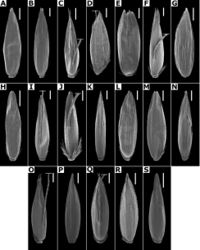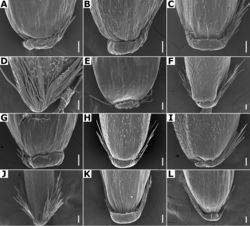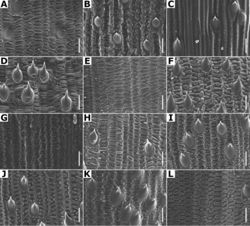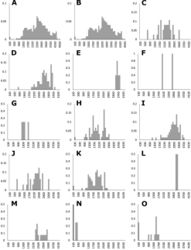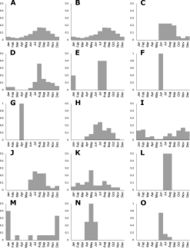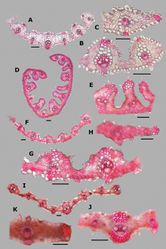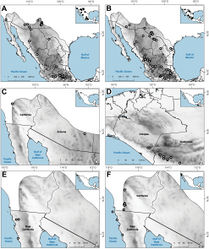Agrostis hyemalis
| Notice: | This page is derived from the original publication listed below, whose author(s) should always be credited. Further contributors may edit and improve the content of this page and, consequently, need to be credited as well (see page history). Any assessment of factual correctness requires a careful review of the original article as well as of subsequent contributions.
If you are uncertain whether your planned contribution is correct or not, we suggest that you use the associated discussion page instead of editing the page directly. This page should be cited as follows (rationale):
Citation formats to copy and paste
BibTeX: @article{Vigosa-Mercado2023PhytoKeys230, RIS/ Endnote: TY - JOUR Wikipedia/ Citizendium: <ref name="Vigosa-Mercado2023PhytoKeys230">{{Citation See also the citation download page at the journal. |
Ordo: Poales
Familia: Poaceae
Genus: Agrostis
Name
Agrostis hyemalis (Walter) Britton, Sterns & Poggenb., Prelim. Cat. 68. 1888. – Wikispecies link – Pensoft Profile
- [[=Cornucopiae hyemalis|=Cornucopiae hyemalis]] Walter, Fl. Carol. 73. 1788. Agrostis canina L. var. hyemalis (Walter) Kuntze, Revis. Gen. Pl. 3(3): 338. 1898. Agrestis hyemalis (Walter) Lunell, Amer. Midl. Naturalist 4: 216. 1915. Type: USA. South Carolina: Charleston, sandy open ground near Navy Yard, 27 Apr 1912, B.L. Robinson 97 (neotype, designated by Ward (2007[1]: 1099): GH (GH00247993 [image!]): isoneotypes: BH, US (US00955689 [image!])).*
Type
Based on Cornucopiae hyemalis Walter.
Description
Plants perennial, caespitose. Tillers extravaginal, with cataphylls. Culms 15–90 cm long, erect, sometimes shortly decumbent at the base, nodes (2–)3–7, glabrous, internodes glabrous. Leaves basal and cauline; sheaths 5–11 cm long, usually shorter than the internodes, glabrous or scaberulous; ligules 1–7 mm long, longer than wide, dorsally scaberulous, apices rounded to truncate, erose, sometimes acute, often lacerate; blades 3–10(–15) cm long, 1–2(–3) mm wide, linear, flat, often becoming involute when dry, scaberulous on both surfaces. Panicles 10–30 cm long, (1.5–)4–25(–30) cm wide, open, lax, ovate, exserted from the upper sheaths, sometimes partially included; branches spreading, sometimes ascending, rebranching in the upper third, scaberulous, without spikelets near their base, spikelets clustered at the tips, inferior branches up to 15 cm long; pedicels (0.1–)0.5–2(–3.5) mm long, appressed, scaberulous. Spikelets 1–2(–2.5) mm long, greenish to purplish; glumes subequal to unequal, lanceolate, apices acute to shortly acuminate, 1-veined, scaberulous on the keel, sometimes also on the body, lower glume 1–2(–2.3) mm long, upper glume 0.8–1.9(–2.2) mm long; callus pubescent, with two bunches of trichomes; lemmas 0.8–1.3(–1.4) mm long, elliptic, apices entire, acute to obtuse, sometimes truncate, 5-nerved, veins inconspicuous or prominent, unawned; paleas absent or up to 0.2 mm long, veinless, glabrous; anthers 3, 0.2–0.5 mm long. Caryopsis 0.6–1.2 mm long, elliptic; endosperm soft. 2n= 28 (Harvey 2007[2]).
Anatomy and micromorphology
Leaf blades flat in transversal section; adaxial furrows medium-sized, wide; adaxial ribs rounded; keel absent; first order bundles circular in outline, sheath interrupted adaxially and abaxially, abaxial and adaxial sclerenchyma in girders, narrowing towards the bundle; second order bundles circular in outline, sheath interrupted abaxially, abaxial sclerenchyma absent or in girders, narrowing towards the bundle, adaxial sclerenchyma absent or in strands; intercostal sclerenchyma absent; leaf margins with well-developed sclerenchyma caps, rounded; colorless cells absent (Fig. 15I–K). Lemmas with transversal thickenings oblong, wider than the unthickened portions of the wall; prickle hairs abundant to scarce (Fig. 7H).
Distribution and habitat
Agrostis hyemalis is distributed from Ontario province in Canada to central Mexico, and is also present in the West Indies and Ecuador (Harvey 2007[2]). The records of this species in western North America could represent the confusion with A. scabra (see note below). It has also been reported from Perú (Soreng and Peterson 2003[3]). In the study zone, this species has been collected in southern Arizona and Texas, USA, and in the Mexican states of Aguascalientes, Baja California, Baja California Sur, Chihuahua, Coahuila, Durango, Hidalgo, Jalisco, México, Michoacán, Puebla, Querétaro, San Luis Potosí and Sonora (Fig. 18B). It has also been reported from the Mexico City and the states of Colima, Guanajuato, Morelos, Nuevo Leon, Oaxaca, Sinaloa, Tlaxcala and Veracruz (Villaseñor 2016[4]), but no specimens from these states were found. Agrostis hyemalis grows in open areas of temperate forests, with Abies, Juniperus, Pinus or Quercus, cloud forests, rocky areas of grasslands and stream edges, between 14–2710 m a.s.l. (Fig. 9K). The Texan populations of this species grow in lower elevations than the Mexican ones.
Phenology
Specimens with spikelets have been collected from January to November, but most of the records are from May (Fig. 10K).
Commentaries
It has been reported for other regions that the panicles can reach 36 cm long (Harvey 2007[2]).
Agrostis hyemalis is often confused with A. elliottiana (see the note under the description of that species). It is also similar to A. scabra, in the panicle branches rebranching in the upper third and somewhat clustered spikelets, and also shares several leaf blade anatomy features. Agrostis hyemalis differs from the latter in the culms with usually more than three nodes, basal and cauline leaves, more clustered and shorter spikelets, of 1–2(–2.5) mm long, and smaller anthers of 0.2–0.5 mm long (vs. culms with usually 1–2(–3) nodes, usually mostly basal leaves, spikelets of 2–3(–3.4) mm long, anthers 0.5–1.4 mm long in A. scabra). The identification of these two species is especially difficult if the plants are not collected with the basal parts.
Conservation status
Agrostis hyemalis is a widespread species in the study zone. It is represented by 86 collections, with several populations occurring in 15 protected areas. The EOO is 1,491,700 km2 and the AOO is 248 km2. Following the IUCN criteria, the preliminary assessment category is Least Concern (LC).
Representative specimens examined
Mexico. Aguascalientes: Municipio Calvillo, margen Presa Los Adobes, 21.805°N, 102.6886111°W, 1960 m alt., 29 Mar 2010, F. Macías 5 (FCME, IEB, INEGI, MEXU [*], UAMIZ). Baja California: Municipio Ensenada, Los Llanitos, [30.96666667°N, 115.4333333°W], 2550 m alt., 17 Aug 1967, R. Moran and R.F. Thorne 14267 (MEXU). Baja California Sur: Municipio La Paz, Sierra de la Laguna, arroyo la Boquilla, [23.53333°N, 109.9°W], 1850 m alt., 2 Jun 1995, M. Domínguez 1009 (SD [*]). Chihuahua: Municipio Chihuahua, rancho El Peñasco, km 150 carretera Chihuahua-Ciudad Juárez, [29.875°N, 106.375°W], 750 m alt., 9 Aug 1979, M.E. Siqueiros 340 (MEXU [*]). Municipio Chínipas, rancho Byerly, Sierra Charuco, [27.581389°N, 108.696111°W], 1767 m, Apr 1948, H.S. Gentry 8027 (MEXU, US). Coahuila: Municipio Ocampo, Madera del Carmen, 0.5 mi from Campo Uno, up the road towards the summit, 28.99611111°N, 102.6113889°W, 2355 m alt., 22 Sep 2007, P.M. Peterson et al. 21016 (CAN, MEXU [*, **], US); Durango: Municipio Durango, predio Las Bayas (UJED), arroyo San Rafael, 23.44416667°N, 105.8775°W, 2710 m alt., 8 Aug 1990, A. García and M. González 610 (CIIDIR). Municipio Suchil, arroyo El Toboso, potrero Jacales, San Juan de Michis, [23.432778°N, 104.132778°W], 2220 m alt., 3 Jan 1986, J. Alvarado 711 (CIIDIR, IBUG, IEB, MEXU [*], UAMIZ). Hidalgo: Municipio Huasca de Ocampo, 0.5 km al W de Bermúdez, sobre el camino de terracería que conduce de Bermúdez a Huasca de Ocampo, [20.1975°N, 98.58861111°W], 2230 m alt., 21 Jul 1994, M. Osorio 27 (MEXU). Jalisco: Municipio Gudalajara, periférico de Guadalajara, cercano al auditorio Benito Juárez, [20.72784467°N, 103.3330636°W], 1540 m alt., 13 Nov 1975, C. García 238 (IBUG). México: Municipio Cuautitlán, alrededores de Cuautitlán, [19.65834784°N, 99.22657358°W], 2250 m alt., 5 Jun 1982, J. Rzedowski 37841 (CIIDIR, IEB, INEGI, MEXU [*], XAL). Municipio San Simón de Guerrero: 3 km sobre la desviación a San Simón de Guerrero, por la carretera Temascaltepec-Tejupilco, [19.01841341°N, 100.0282873°W], 1974 m alt., 15 Mar 1983, E. Manrique et al. 207 (MEXU [*]). Michoacán: Municipio Charo: cerca de Pontezuela, 25 km al E de Morelia, sobre la carretera a Mil Cumbres, [19.65730833°N, 100.9891889°W], 2200 m alt., 29 Jan 1987, J. Rzedowski 42417 (CHAPA, CIIDIR, ENCB, FCME, IBUG, IEB, MEXU); El Salto de Agua, 2300 m alt., 1 Feb 1994, J.A. Torres 34 (MEXU [*,**]). Puebla: Municipio Honey, 1 km al E de Ocahuales, carretera a Pahuatlán, [20.28333333°N, 98.2°W], 1880 m alt., 4 May 1989, P. Tenorio 15742 (IEB, MEXU, NY, TEX). Querétaro: Municipio Landa, 5 km al S de El Lobo, sobre el camino a Agua Zarca, [21.26118889°N, 99.11667778°W], 1500 m alt., 21 Feb 1987, J. Rzedowski 42572 (IEB). San Luis Potosí: Municipio San Luis Potosí, Cañada de Lobos, Sierra de San Miguelito, 5 km al S de la ciudad de San Luis Potosí, [22.09433995°N, 100.9645498°W], 1900 m alt., 1968, F. Takaki 2170 (MEXU). Sonora: without municipality, Sonora, 24 Jun 1855, A. Schott s.n. (F). Zacatecas: Municipio Guadalupe, ladera N del cerro de la Virgen, 215 m, 10 Aug 1988, J. Balleza 1580 (CHAPA). USA. Arizona: Pima County, Forest Cabin, Baboquivari Mountains, [31.7897°N, 111.586°W], 2091 m alt., 14 May 1941, C. Goodding 105-41 (ASU). Texas: Hidalgo County, ca. 1.3 airmiles SW of junction of Hidalgo, Kennedy and Willacy Counties, Hunke Ranc, La Sal Vieja Quadrangle, 26.59958°N, 97.97172°W, 14 m alt., 16 Mar 2004, W.R. Carr and M. Pons 22785 (TEX). Jeff Davis County, NW flank of Mount Livermore, ca. 0.3 mi ESE of Madrea Tank, ca. 0.7 mi, NNW of summit of Baldy Peak, 30.64722°N, 104.17833°W, 1890 m alt., 11 Aug 2000, W.R. Carr 19093 (TEX [*]). See Suppl. materials 2, 3 for additional examined specimens.
Taxon Treatment
- Vigosa-Mercado, J; Delgado-Salinas, A; Alvarado Cárdenas, L; Eguiarte, L; 2023: Revision of the genus Agrostis (Poaceae, Pooideae, Poeae) in Megamexico PhytoKeys, 230: 157-256. doi
Images
Other References
- ↑ Ward D (2007) Thomas Walter typification project, IV: Neotypes and epitypes for 43 Walter names, of genera A through C.Journal of the Botanical Research Institute of Texas1(2): 1091–1100. https://www.jstor.org/stable/41971537
- ↑ 2.0 2.1 2.2 Harvey M (2007) Agrostis. In: Barkworth M Capels K Long S Anderton L Piep M (Eds) Flora of North America North of Mexico (Vol.24) Oxford University Press, New York, 633–662. http://floranorthamerica.org/Agrostis
- ↑ Soreng R, Peterson P (2003) Agrostis. In: Soreng R Peterson P Davidse G Judziewicz E Zuloaga F Filgueiras T Morrone O (Eds) Catalogue of New World Grasses (Poaceae): IV. Subfamily Pooideae.Contributions from the United States National Herbarium48: 42–89. https://archive.org/details/mobot39088011697067
- ↑ Villaseñor J (2016) Checklist of the native vascular plants of México.Revista Mexicana de Biodiversidad87(3): 559–902. https://doi.org/10.1016/j.rmb.2016.06.017
